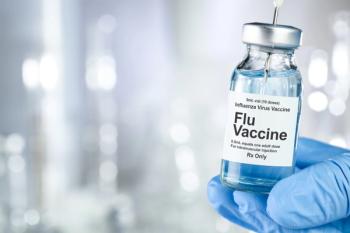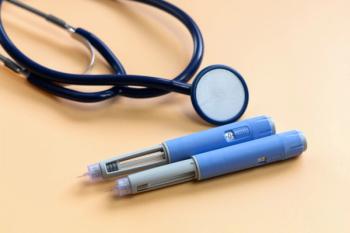
- October 2013 Diabetes
- Volume 79
- Issue 10
OTC Case Studies: Self-Care for Treating Diabetes
Case studies involving questions about low blood glucose level, soy supplementation, blood glucose monitors, and flu prevention.
Case 1: Low Blood Glucose Level
MG is a 43-year-old female who comes to the pharmacy with a prescription for insulin. She has been using insulin for 3 months, and her blood glucose level has significantly improved. On questioning, she says her blood glucose level is typically in the 80 to 120 mg/dL range. She states that it occasionally goes below 60 mg/dL and she starts feeling shaky. She says this first began when she started taking insulin, and it usually happens when she does not eat her normal meals. She says when she feels shaky and lightheaded, she usually eats a sandwich or something with carbohydrates to increase her blood glucose level. What counseling points would you give to MG regarding her low blood glucose level?
Answer:
MG’s shakiness and lightheadedness are clear symptoms of hypoglycemia. Typically, signs of hypoglycemia are “shakiness, sweating, chills, confusion, lightheadedness, dizziness, and blurred vision.”1 Because she also has a blood glucose level below 60 mg/dL, it is important that she treat her hypoglycemia appropriately. Typically, eating a sandwich would not provide enough simple sugars to treat MG’s hypoglycemia. She needs to have 15 to 20 g of simple carbohydrates. Fifteen grams of carbohydrates can be obtained from any of the following: 3 or 4 glucose tablets (follow package instructions), a gel tube (follow package instructions), 2 tbsp of raisins, 4 oz of juice or regular soda, 1 tbsp of sugar, or 8 oz of milk.1 After taking 15 to 20 g of carbohydrates, MG should wait 15 minutes and then recheck her blood glucose. If hypoglycemia continues, she should consume an additional 15 to 20 g of carbohydrates. Once her blood glucose level returns to normal, MG should be encouraged to eat a small snack if the next meal is 1 to 2 hours away. To avoid hypoglycemia, she should also be educated on eating proper meals and told not to skip meals. She should also be encouraged to follow up with her physician to discuss management of insulin on days when she is going to skip meals.
Case 2: Soy Supplementation
GR is a 56-year-old female who comes to the pharmacy stating she was recently diagnosed with type 2 diabetes mellitus (T2DM). She says she has a family history of T2DM with both parents and is looking for something natural to treat her T2DM. She works as a yoga instructor and likes to eat a healthy diet. On questioning, she says she tends to eat all natural and organic products, including vegetables, fruits, and meats. She says someone told her soy would be beneficial for preventing her blood sugar from elevating. GR states her physician prescribed metformin 3 months ago, but she has not taken it yet. She says she is not against taking metformin but would like to explore all her options before she makes a decision. What recommendations would you have for GR regarding her T2DM and soy products?
Answer:
Since soy supplementation is not recommended as first-line treatment for T2DM, GR can consider adding soy to her diet in addition to taking metformin. Some data suggest that soy is associated with improvements in glycemic control. Therefore, it may be beneficial to include soy in the diet of patients with T2DM. Soy-based products are readily available for incorporation into the diet. Many of the supporting trials provided education to the subjects at enrollment and close monitoring by dieticians and physicians throughout the treatment periods. This must be taken into consideration when extrapolating these findings to the general population since soy supplementation without proper counseling on diet adherence may not have similar results. No large clinical trials have compared the various soy products on the market; therefore, it would be difficult to recommend a specific type of treatment. It is important to note that most studies showing beneficial effects of soy typically used soy protein products. Therefore, if a patient chooses to supplement his or her diet with soy to help manage T2DM, it may be beneficial to recommend a soy protein—based product. Prior to starting, GR should discuss soy supplementation with her physician.
Case 3: Blood Glucose Monitors
ML is a 36-year-old female who comes to the pharmacy with a refill request for metformin and glyburide. She says she has had diabetes mellitus (DM) for 2 years. Today she has a prescription for insulin glargine 10 units at bedtime. She claims she has never tested her blood glucose level before but is interested in purchasing a new monitor. She says she saw a TV commercial for a glucose monitor that allows alternate site testing. She is interested in your opinion on which monitor is the best on the market.
Answer:
It is important to tell ML that most blood glucose monitors on the market are comparable, but certain key factors can help determine the best monitor for a person. Cost is always an important component because insurance providers typically have a preferred monitor for which test strips can be purchased for a lower copay. Once that is determined, the factors to consider when selecting a monitor include monitor size, sample size, size of display, timing, accuracy, memory, ease of use, data management and download features, alternate site testing, battery type, and need for cleaning. Before recommending a glucose monitor, ask the patient which features are important to him or her. ML states that alternate site testing is important for her. Many monitors allow the use of alternate sites such as the palm, forearm, upper arm, thigh, and calf. It is important to counsel ML as to when it is not appropriate to use alternate site testing (ie, typically, when her glucose is fluctuating, such as 2 hours after a meal, during periods of hypoglycemia, or right after exercise). Patients should be encouraged to use alternate site testing only when they are in a fasting state, before meals, and more than 2 hours after physical activity or meals. Because ML is starting a new treatment, she might benefit from testing her blood glucose level on her fingers until it stabilizes on the new medication. Once the level is controlled, she can start testing it at alternate sites.
Case 4: Flu Prevention
RD is a 58-year-old female who comes to the pharmacy to refill her prescription for metformin and Onglyza (saxagliptin). She says her diabetes mellitus (DM) is controlled well with medication and lifestyle modifications. She states that because it is October, she is concerned about getting the flu. She had it last year and could not get out of bed for a week. Her friend recommended that she get some special vitamins that prevent the flu. She has never had the flu shot and is not against it. She has no allergies to foods or medications. She wants to know what you would recommend for preventing flu.
Answer:
Currently, no vitamins on the market are associated with good data suggesting they can prevent influenza. The most effective way to prevent it is to get the influenza vaccination each year. In February 2010, the recommendation for annual influenza vaccination expanded to include all people 6 months and older. Despite these recommendations, influenza rates remain between 40% and 60%.2 Patients with DM are at higher risk for complications related to influenza, so RD should definitely get a flu vaccination every year. Because RD has DM, she would not be a candidate for intranasal influenza vaccination. Therefore, she should get the intradermal or intramuscular injection. This year, trivalent and quadrivalent vaccines are on the market. Either one would be beneficial for RD, so she should get vaccinated with whichever is available. Her dose would be 0.5 mL intramuscular. RD should be informed that influenza is associated with complications that can result in significant morbidity and mortality. Although she could not get out of bed when she last had the flu, she was relatively lucky not to be hospitalized for secondary complications. The most frequent complication of influenza is pneumonia, which can lead to hospitalization. Influenza can exacerbate DM, and the risk for complications, hospitalization, or death from influenza is usually higher in patients with underlying medical conditions.
Dr. Mansukhani is a clinical pharmacist in South Plainfield, New Jersey, and clinical assistant professor, Ernest Mario School of Pharmacy, Rutgers University. Dr. Bridgeman is an internal medicine clinical pharmacist in New Brunswick, New Jersey, and clinical assistant professor, Ernest Mario School of Pharmacy, Rutgers University.
References
- American Diabetes Association. Hypoglycemia (low blood glucose). www.diabetes.org/living-with-diabetes/treatment-and-care/blood-glucose-control/hypoglycemia-low-blood.html. Accessed September 4, 2013.
- Centers for Disease Control and Prevention. Influenza vaccination coverage among health-care personnel: 2011-12 influenza season, United States. www.cdc.gov/MMWR/preview/mmwrhtml/mm6138a1.htm. Accessed September 10, 2013.
Articles in this issue
about 12 years ago
Pet Peevesabout 12 years ago
Case Studiesabout 12 years ago
Diabetes Specialized Medication Therapy Managementabout 12 years ago
Can You Read These Rxs?about 12 years ago
Dangerous Liaisons: Obesity and Diabetesabout 12 years ago
Type 2 Diabetesabout 12 years ago
Opportunities for Improving Outcomes with Insulin Injectionsabout 12 years ago
Health App WrapNewsletter
Stay informed on drug updates, treatment guidelines, and pharmacy practice trends—subscribe to Pharmacy Times for weekly clinical insights.


















































































































































































































